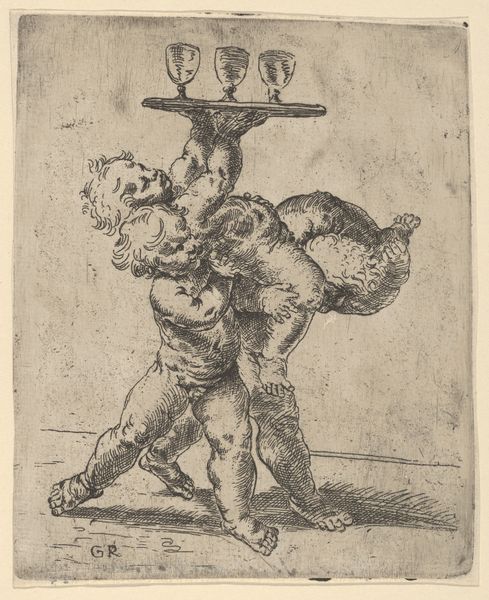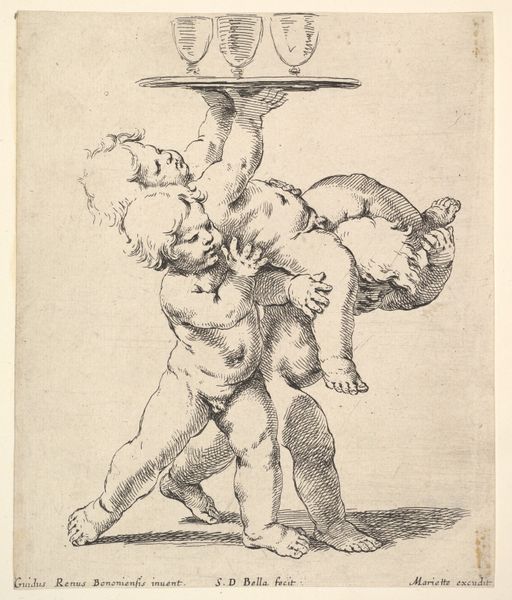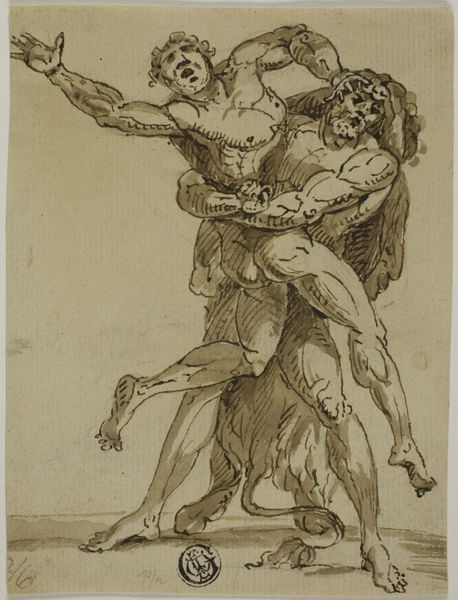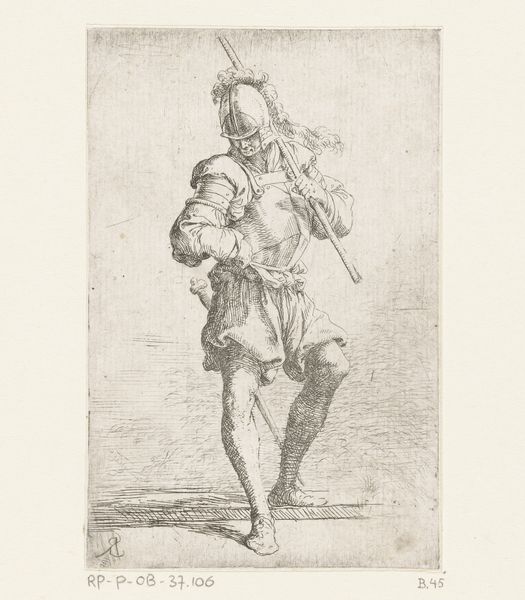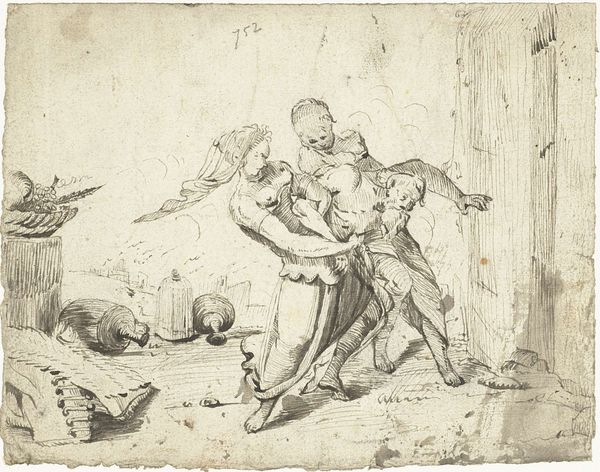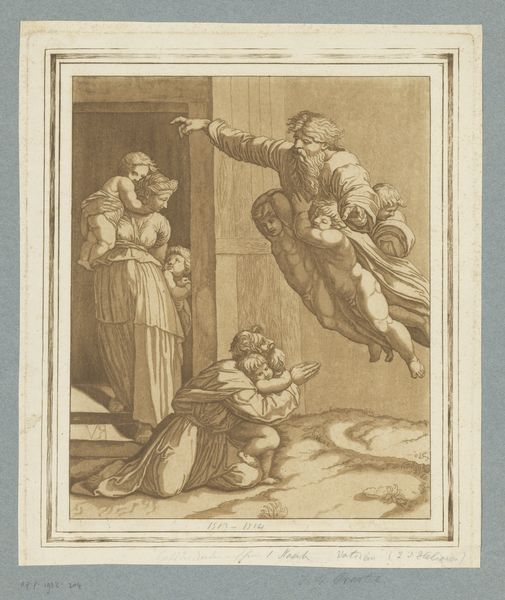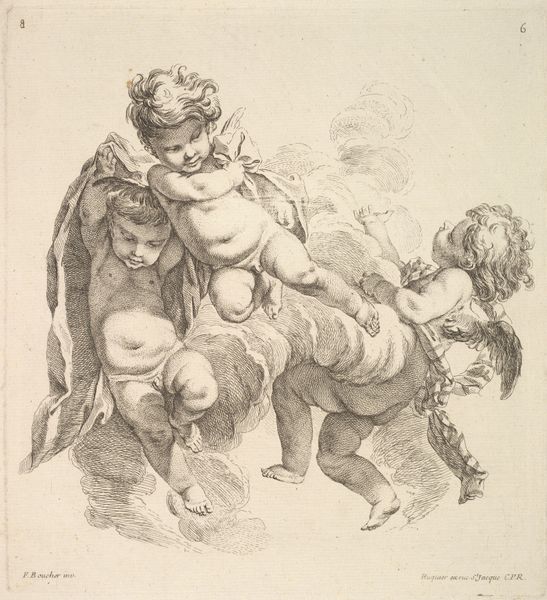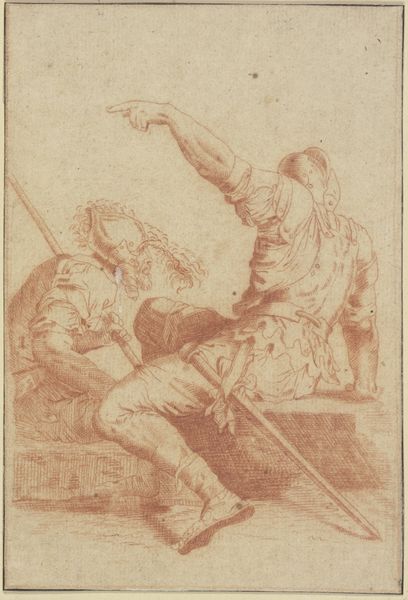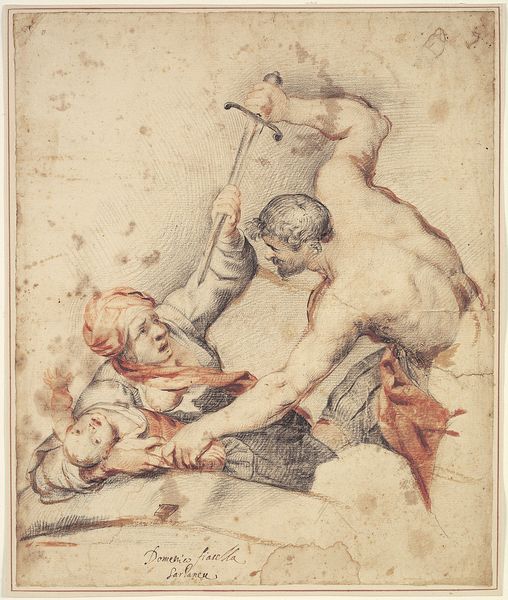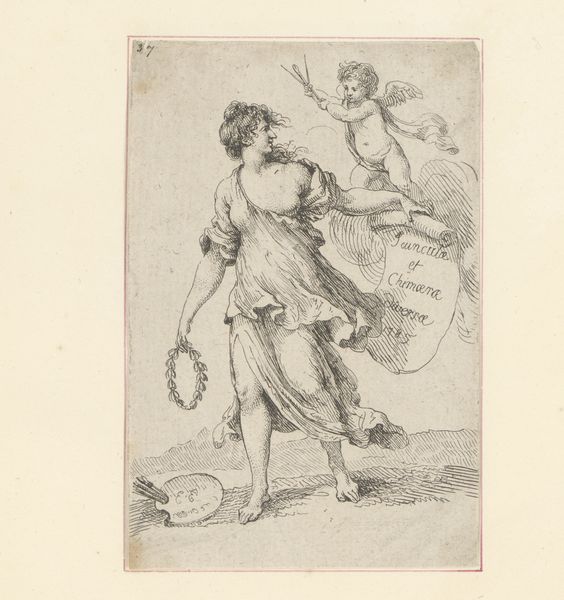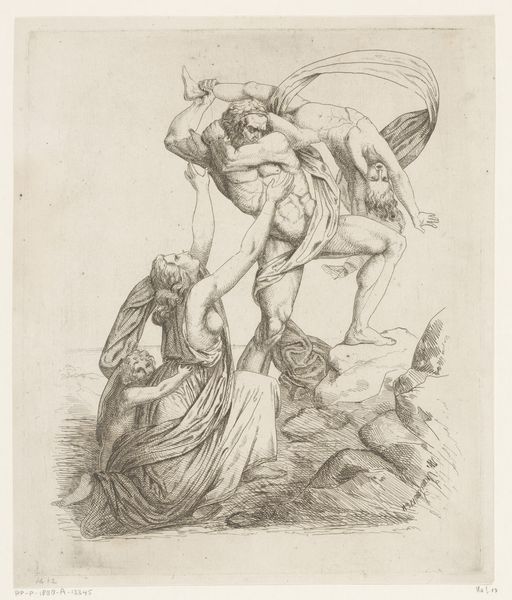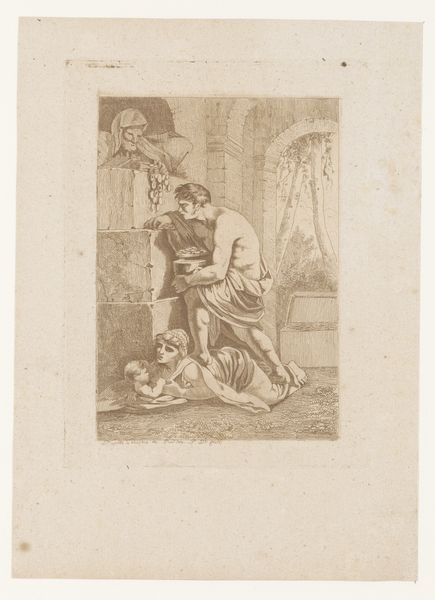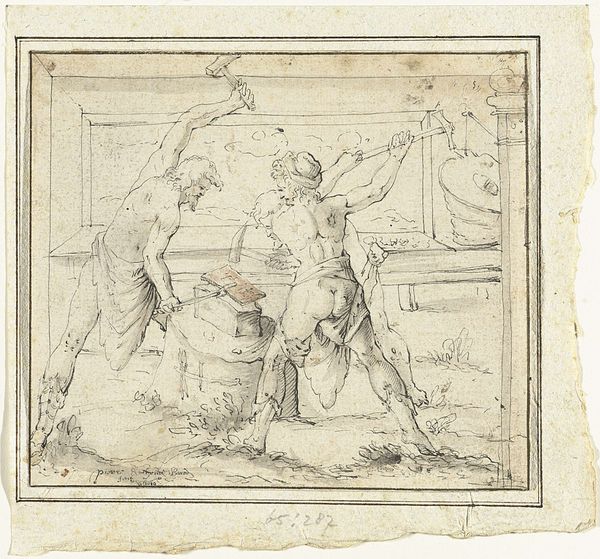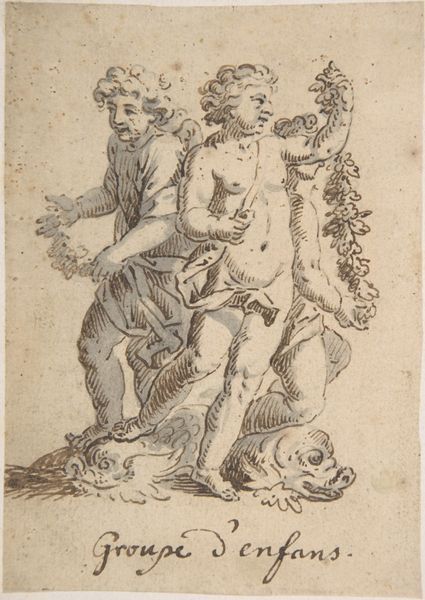
Three Children with a Tray and Three Goblets c. 1607 - 1614
0:00
0:00
print, etching
#
baroque
# print
#
etching
#
figuration
#
genre-painting
Dimensions: 6 11/16 × 5 1/2 in. (16.99 × 13.97 cm) (plate)7 7/8 × 6 9/16 in. (20 × 16.67 cm) (sheet)
Copyright: Public Domain
Editor: This etching by Guido Reni, made sometime between 1607 and 1614, is titled "Three Children with a Tray and Three Goblets." I'm really struck by how precarious the whole composition feels, like the children could topple over at any moment. What catches your eye about this work? Curator: Considering this through a materialist lens, I find the subject—children engaged in service—and the medium itself particularly telling. Etchings like this weren’t simply artistic expressions; they were commodities. How do you think the accessibility and reproducibility of prints like this one influenced its reception in comparison to, say, a unique painting? Editor: That's a great point. It’s much easier to circulate. So, instead of the elite enjoying it in their palaces, it could also be attainable to merchants and middle-class patrons? It makes me think about the purpose behind showing children performing this duty. Curator: Precisely! This image enters into a larger social dialogue. The labour these children represent isn’t idealized; it's presented as work. How does that intersect with the Baroque fascination with capturing the real world, even in scenes depicting classical or biblical figures? Editor: Interesting! It seems that it touches on reality and representation within societal practices of labor, blurring the lines of innocence and service through easily consumable art. Curator: Exactly. And that tension, reproduced and disseminated widely, becomes a part of the social fabric. Editor: I hadn’t considered it that way, as almost a product reflecting back at society. This perspective definitely expands my appreciation beyond just its visual charm. Thank you!
Comments
minneapolisinstituteofart almost 2 years ago
⋮
The Italian Baroque painter Guido Reni was celebrated for his depictions of pious Madonnas and saints, and sweet chubby angels and children. In this etching, he represents three naked boys playfully and precariously carrying a tray with three goblets. It seems at any moment one of them might stumble and the glasses will tumble to the floor. While printmaking was a secondary pursuit of the artist, Reni was both prolific—executing over fifty etchings—and extremely influential in the medium. This particular image was widely emulated by artists into the nineteenth century.
Join the conversation
Join millions of artists and users on Artera today and experience the ultimate creative platform.
